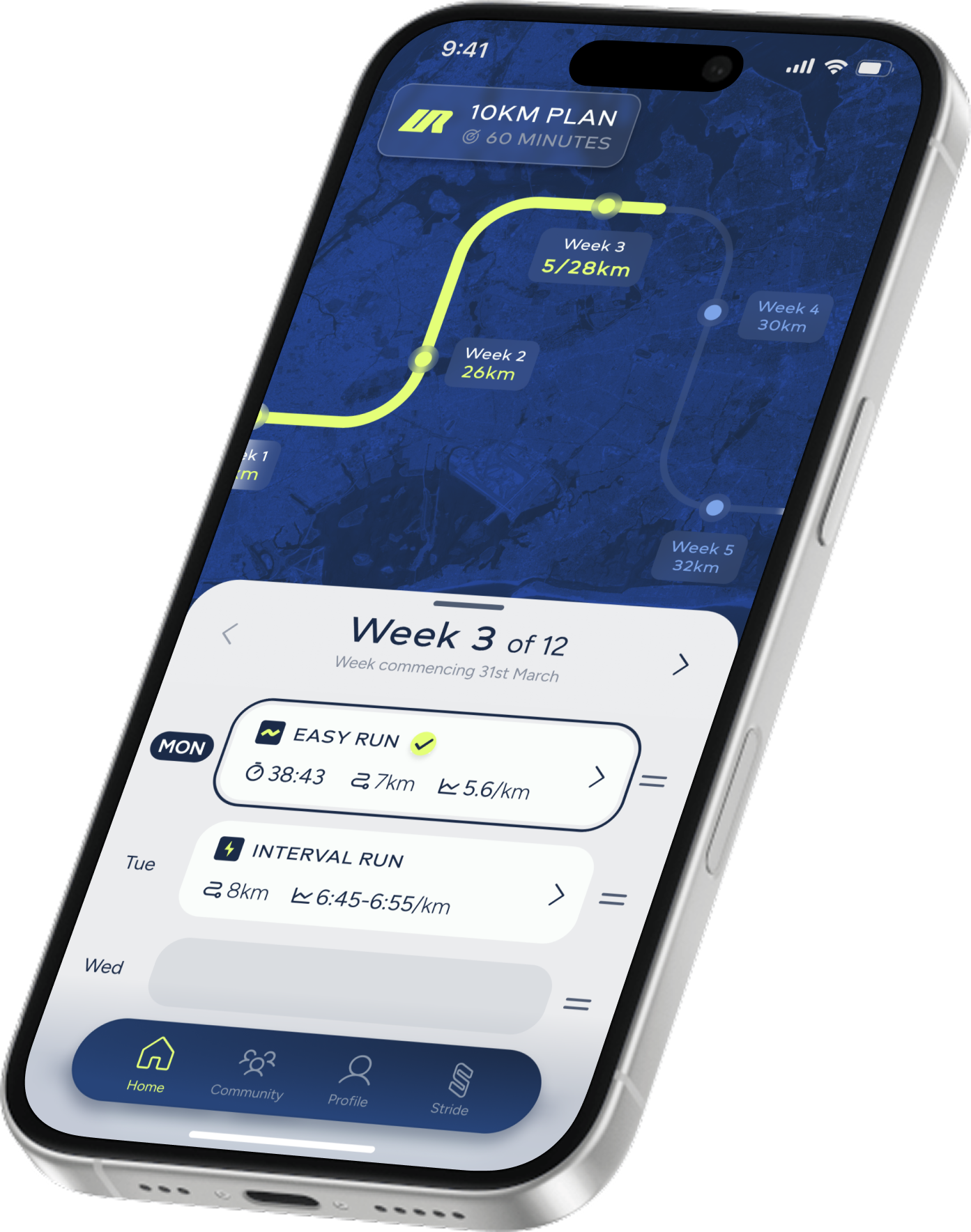You've laced up, hit the road, and your trusty running watch has tracked every step.
But when you look at that post-run summary, do you actually understand your running performance metrics? Or, does it still mystify you?
If you’re in the latter camp, don’t worry. You’re not alone.
URUNN is here to decode the key metrics so you can turn numbers into insight. And insight into performance.
Heart Rate (HR) and Heart Rate Zones
Your heart rate is one of the most valuable running performance metrics – it reflects how hard your body is working in real-time.
Most running watches display:
- Current heart rate
- Average heart rate
- Heart rate zones (based on % of your max HR)
What it means
Heart rate zones are typically split into 5 levels, each with a different training effect:
- Zone 1 (very light): Recovery runs and gentle warm-ups
- Zone 2 (light/aerobic): Increases endurance – this is your ‘conversational pace’
- Zone 3 (moderate/tempo): Improves speed and aerobic capacity
- Zone 4 (hard/threshold): Great for intervals and building lactate tolerance
- Zone 5 (max): Short, high-intensity efforts – not sustainable for long
Why it matters
Training within these specific zones transforms your runs into strategic workouts, tailored precisely to your goals – whether it's increasing endurance, improving speed, or actively recovering.
Cadence (steps per minute - SPM)
Running cadence is the number of steps you take per minute. It reflects your running rhythm and can directly impact efficiency.
What it means
A higher cadence usually indicates quicker, lighter steps, which can reduce the impact on your joints. Many elite and efficient runners aim for around 170–180 SPM.
Why it matters
Low cadence may mean you’re overstriding – landing your foot too far ahead of your body, wasting energy and increasing injury risk.
Pro-tip: A modest cadence increase can help improve your form and flow.
Stride Length
Running stride length is the distance covered with each step. It typically balances with cadence – longer stride = fewer steps, and vice versa.
What it means
Your running watch data calculates this by dividing your distance by your total steps.
Why it matters
A longer stride isn’t always better. Overstriding can compromise your efficiency and lead to a higher chance of injury.
Instead of reaching forward, try to improve your stride length by increasing push-off strength and maintaining good posture.
Ground Contact Time (GCT)
Your ground contact time (GCT) is precisely what it sounds like: how long your foot literally sticks to the ground with each stride, typically in milliseconds.
What it means
Lower GCT often correlates with a more efficient form. Elite runners have very brief contact times, reflecting powerful strides and quicker transitions.
Why it matters
While you don't need to obsess over every millisecond, a prolonged GCT can quietly signal an opportunity to improve your leg stiffness or strength.
It’s a great feedback tool that can help unlock a more efficient, springier running form.
Training Load and Recovery Time
Many advanced watches now offer running performance metrics like training load and recovery time.
What it means
These are often calculated using a combination of your heart rate data and activity type.
A high training load suggests a demanding workout, and the recovery time is your watch's best guess for when you're ready to go hard again.
Why it matters
These metrics help you manage training stress and avoid overdoing it.
While no algorithm is perfect, they can help you balance effort with rest – a key factor in long-term performance and injury prevention.
Remember, context is King
Your running watch data provides useful insights. However, it’s not the whole story.
Some days, you’ll feel amazing, but your stats won’t reflect it. Other times, the numbers look great, but your body tells a different story. That’s okay.
The key? Context.
Use the data as feedback. Not rules.
Combine it with:
- Your perceived effort
- Your physical cues (like soreness or energy)
- Advice from coaches or physios
This balanced approach will help you train smarter, stay consistent, and run with confidence.
Ready to leverage your running watch data and transform the way you train?
Download URUNN and start running smarter.

.webp)


.webp)
.webp)
